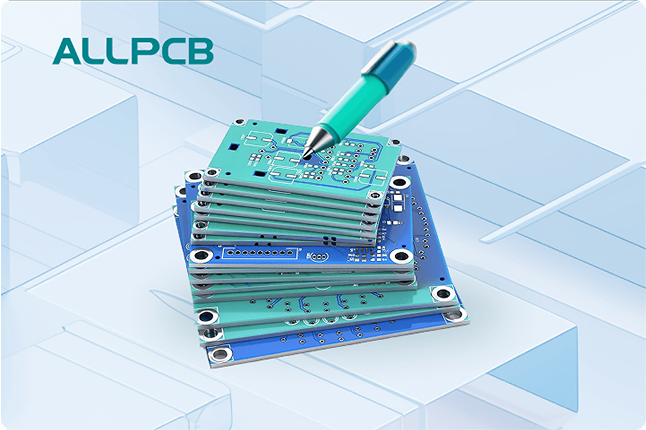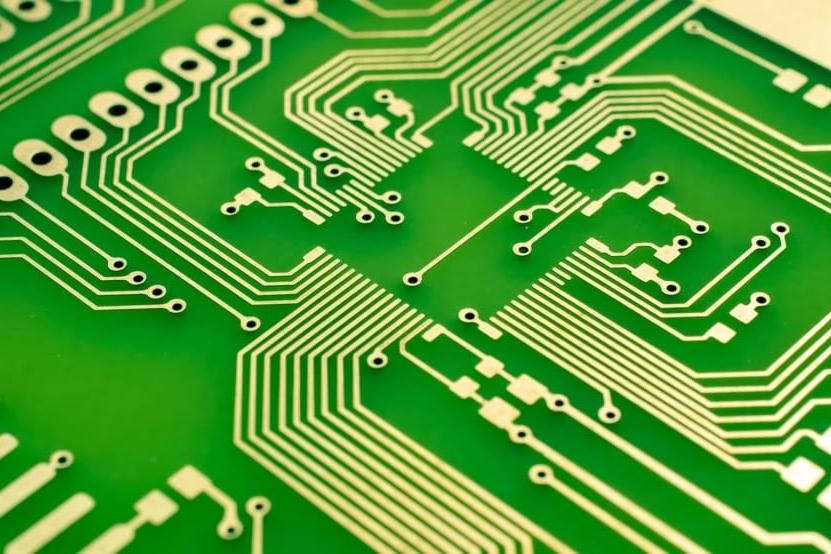In the world of printed circuit board (PCB) design, understanding the difference between a Plated Through-Hole (PTH) and a Via is essential for creating efficient, reliable, and high-performing boards. If you're wondering about PTH vs via size, PTH vs via current carrying capacity, PTH for component mounting, via for signal routing, or when to use PTH vs via, you're in the right place. Simply put, PTHs are larger holes used primarily for mounting components with leads, while vias are smaller and used to connect different layers of a PCB for signal routing. In this blog, we'll dive deep into these differences, providing practical insights to help you make informed decisions for your PCB designs.
Introduction to PTH and Vias in PCB Design
PCBs are the backbone of modern electronics, connecting components and routing signals across multiple layers. Two critical features in PCB manufacturing are Plated Through-Holes (PTHs) and Vias. While both are holes in the board with conductive plating, their purposes, sizes, and applications differ significantly. Whether you're a beginner or a seasoned engineer, knowing how to use these features can impact the performance, cost, and manufacturability of your design.
In this comprehensive guide, we'll break down the key differences between PTH and vias. We'll explore their roles in PCB design, focusing on aspects like size, current capacity, and specific use cases. By the end, you'll have a clear understanding of when to use PTH vs via to optimize your projects.

What Are Plated Through-Holes (PTHs)?
A Plated Through-Hole, or PTH, is a hole drilled through the entire thickness of a PCB and plated with a conductive material, usually copper. PTHs are designed to connect all layers of the board and are often used for mounting through-hole components, such as resistors, capacitors, and connectors, by inserting their leads into the holes and soldering them in place.
PTHs are typically larger in diameter compared to vias because they need to accommodate component leads. They also provide mechanical strength, ensuring components stay securely attached to the board, even under stress or vibration. This makes PTHs ideal for applications where durability is a priority, such as in industrial or automotive electronics.
Key Characteristics of PTHs
- Size: PTHs are generally larger, with diameters ranging from 0.5 mm to several millimeters, depending on the component lead size.
- Purpose: Primarily used for PTH for component mounting, connecting component leads to the PCB.
- Current Capacity: Due to their larger size, PTHs have a higher PTH vs via current carrying capacity, making them suitable for power connections.
- Layer Connection: Connects all layers of the PCB, from top to bottom.
What Are Vias in PCB Design?
A Via is a small plated hole in a PCB that connects different layers of the board without necessarily passing through the entire thickness. Vias are used to route electrical signals or power between layers in multilayer PCBs, enabling compact and complex designs. Unlike PTHs, vias are not intended for component mounting but for via for signal routing.
Vias come in different types, such as through-hole vias (passing through all layers), blind vias (connecting an outer layer to an inner layer), and buried vias (connecting only internal layers). Their smaller size makes them perfect for high-density designs where space is limited.
Key Characteristics of Vias
- Size: Vias are much smaller than PTHs, with diameters typically ranging from 0.1 mm to 0.3 mm in modern designs.
- Purpose: Used for via for signal routing between layers, not for component mounting.
- Current Capacity: Lower PTH vs via current carrying capacity due to smaller size, often used for low-current signals.
- Layer Connection: Can connect specific layers, depending on the via type (through, blind, or buried).

Key Differences Between PTH and Vias
Now that we’ve defined PTHs and vias, let’s compare them across critical parameters to help you understand their roles in PCB design. We’ll focus on aspects like PTH vs via size, PTH vs via current carrying capacity, and their specific applications.
1. PTH vs Via Size
One of the most noticeable differences is size. PTHs are significantly larger than vias because they are designed to accommodate component leads. For instance, a typical PTH for a standard resistor might have a diameter of 0.8 mm to 1.2 mm, while a via for signal routing might be as small as 0.2 mm in diameter. This size difference impacts the overall layout and density of the PCB. Smaller vias allow for tighter spacing and more compact designs, which is critical in modern electronics like smartphones or wearable devices.
2. PTH vs Via Current Carrying Capacity
When comparing PTH vs via current carrying capacity, PTHs have a clear advantage due to their larger diameter and thicker copper plating. A PTH with a 1 mm diameter and 1 oz copper plating can handle currents of up to 2-3 amps or more, depending on the design. In contrast, a standard via with a 0.2 mm diameter might only handle currents in the range of 0.5-1 amp. For high-current applications, such as power supply circuits, PTHs are often preferred. However, multiple vias can be used in parallel to increase current capacity for signal or power routing between layers.
3. PTH for Component Mounting
PTHs are the go-to choice for PTH for component mounting. Through-hole components, such as DIP (Dual Inline Package) ICs or large electrolytic capacitors, rely on PTHs for both electrical connection and mechanical support. The larger hole size and robust soldering ensure that components remain fixed, even in harsh environments. This makes PTHs ideal for designs where reliability under physical stress is crucial, such as in military or aerospace applications.
4. Via for Signal Routing
On the other hand, vias are essential for via for signal routing in multilayer PCBs. As boards become more complex, signals often need to travel between layers to avoid crossing traces on the same layer. Vias provide this interlayer connectivity without taking up much space. For high-speed signals, such as those in digital circuits operating at 1 GHz or higher, vias must be carefully designed to minimize impedance discontinuities, which can cause signal reflections and degrade performance. Special techniques, like back-drilling or using microvias, are often employed in such cases.

When to Use PTH vs Via in PCB Design
Deciding when to use PTH vs via depends on the specific requirements of your PCB design. Here are some guidelines to help you choose the right option for your project.
Use PTH When:
- You need to mount through-hole components with leads, such as connectors, switches, or power components.
- High current carrying capacity is required for power connections (e.g., currents exceeding 2 amps).
- Mechanical strength is critical, especially in applications subject to vibration or physical stress.
- Your design prioritizes simplicity over density, as PTHs take up more space and are easier to solder manually.
Use Via When:
- You need to route signals or power between layers in a multilayer PCB, especially in high-density designs.
- Space is limited, and smaller holes are necessary to maintain a compact layout.
- High-speed signals are involved, requiring careful management of impedance (vias can be optimized for signal integrity).
- Current requirements are low, as vias are not suited for high-power applications unless used in arrays.
For example, in a power supply board, you might use PTHs to mount large capacitors and inductors that handle high currents, while using vias to route low-power control signals between layers. In a high-speed digital board, such as a motherboard, vias would dominate for signal routing, with PTHs reserved for connectors or other through-hole components.
Design Considerations for PTH and Vias
When incorporating PTHs and vias into your PCB layout, several design considerations can affect performance and manufacturability. Here are some practical tips to keep in mind.
For PTHs:
- Ensure the hole size matches the component lead diameter, with a small clearance (typically 0.1-0.2 mm) for easy insertion and soldering.
- Use adequate pad sizes around PTHs (often 1.5-2 times the hole diameter) to ensure strong solder joints.
- Consider the thermal impact of soldering, as larger PTHs can act as heat sinks, potentially affecting nearby components.
For Vias:
- Minimize via length in high-speed designs to reduce inductance, which can impact signal integrity. For signals above 500 MHz, shorter vias or microvias are preferred.
- Place vias strategically to avoid creating long stub lengths, which can cause signal reflections. Back-drilling may be necessary for critical designs.
- For power delivery, use multiple vias in parallel to increase current capacity and reduce resistance. A common practice is to place 4-6 vias for moderate current paths.
Impact on Manufacturing and Cost
The choice between PTH and vias also affects the manufacturing process and cost of your PCB. PTHs are generally easier and cheaper to produce in small quantities because they require less precision during drilling and plating. However, they take up more space, which can increase material costs in high-density designs.
Vias, especially microvias or buried vias, require advanced manufacturing techniques, such as laser drilling, which can raise production costs. However, they enable smaller, more compact boards, potentially reducing overall material expenses. For high-volume production, the cost of vias may be justified by the space savings and improved performance.
Conclusion: Making the Right Choice for Your PCB Design
Understanding the differences between Plated Through-Holes (PTHs) and Vias is crucial for effective PCB design. PTHs excel in PTH for component mounting and offer higher PTH vs via current carrying capacity, making them ideal for power connections and through-hole components. Vias, with their smaller PTH vs via size, are perfect for via for signal routing in multilayer, high-density boards.
Knowing when to use PTH vs via can significantly impact the performance, reliability, and cost of your design. By considering factors like current requirements, signal speed, and board density, you can make informed decisions that optimize your PCB for its intended application. Whether you're designing a simple prototype or a complex multilayer board, mastering the use of PTHs and vias will elevate the quality of your work.
At ALLPCB, we're committed to supporting your PCB design journey with high-quality manufacturing services tailored to your needs. Keep these insights in mind as you plan your next project, and you'll be well on your way to creating efficient and reliable designs.
 ALLPCB
ALLPCB







